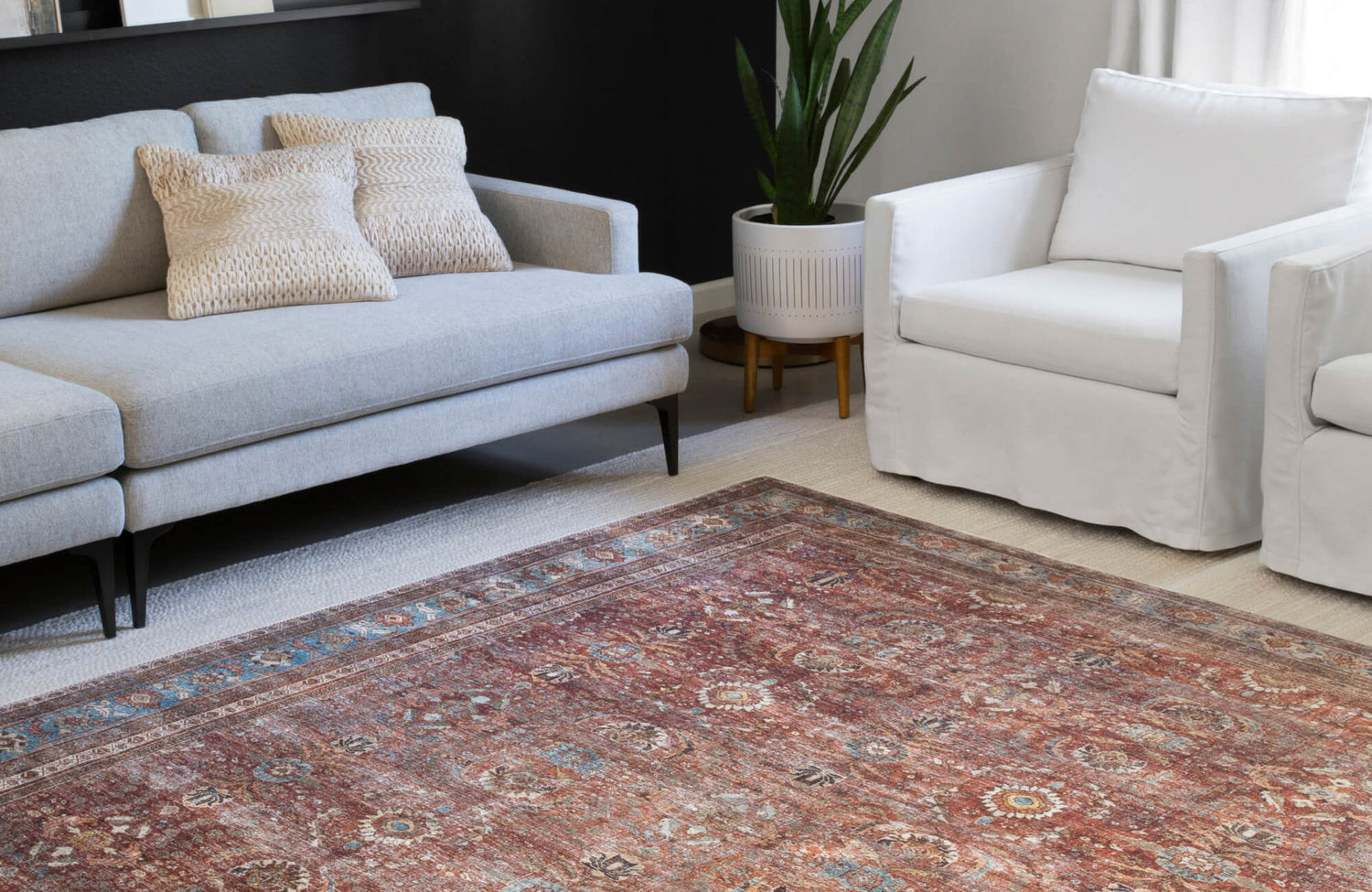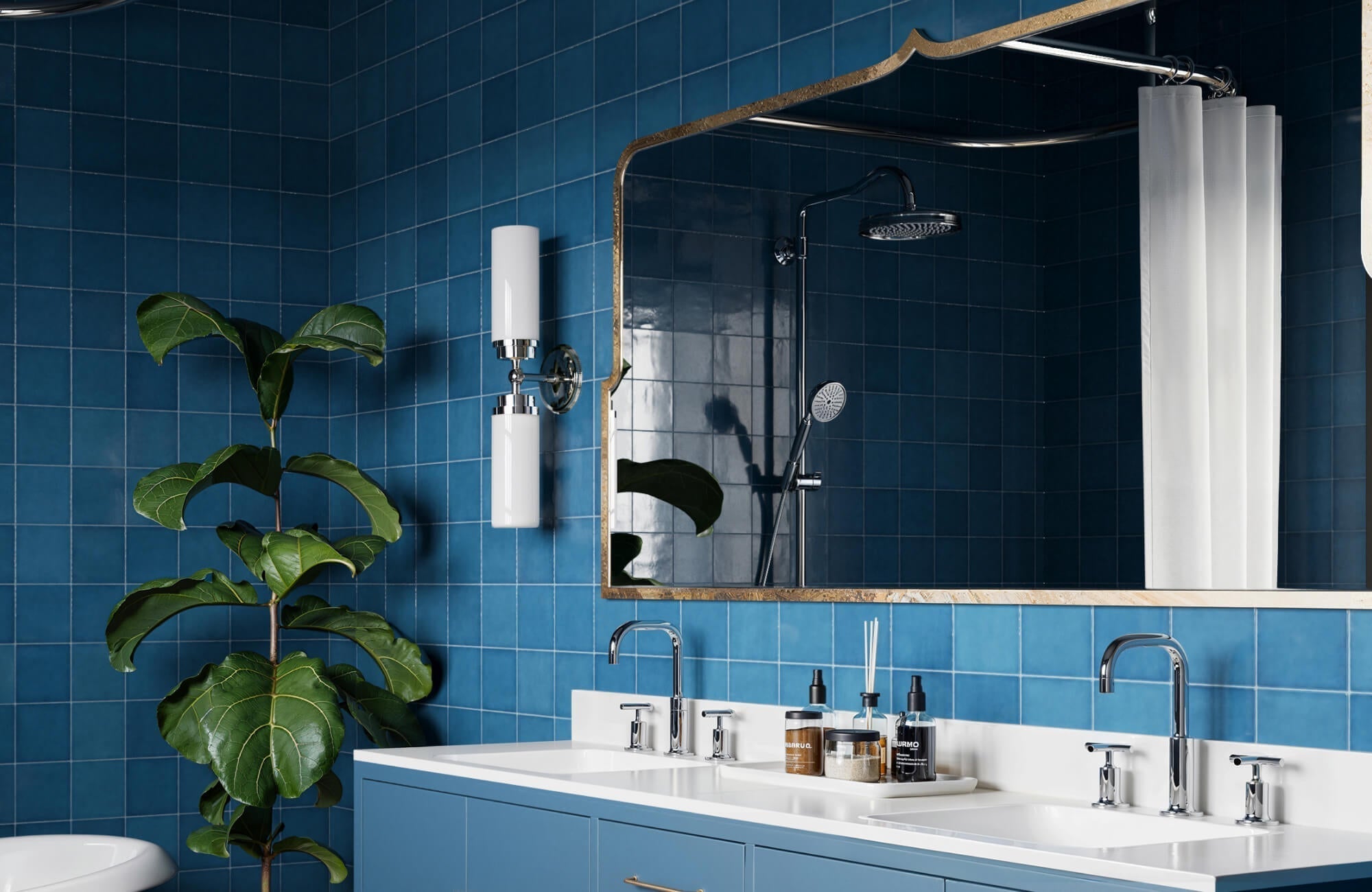Decorating a compact space, whether it’s a studio apartment, small bedroom, or narrow living area, requires careful decisions. Every element counts, and your rug is no exception. The color you choose doesn’t just affect the floor; it can influence how large the room feels, the mood it sets, and how well it functions.
So, how do we decide between a light or dark rug in a small space? The answer lies in understanding how each choice impacts light, layout, and everyday living. Let’s explore the benefits, challenges, and smart strategies for choosing the right rug to elevate your space.
How Rug Colour Affects Mood and Perception
Before we dive into specifics, it's helpful to understand how color influences our emotional and spatial experience. Rug color doesn't just change the way a room looks—it also shapes how it feels.
Light-colored rugs tend to promote an open, uplifting energy. Shades like cream, beige, or soft gray reflect light and can help smaller spaces feel more expansive and airy. They're ideal for rooms lacking natural sunlight or where we want to boost brightness and alertness, like home offices or multipurpose living spaces.
In contrast, dark-colored rugs create a sense of intimacy, comfort, and depth. Rich tones like dark gray, dark blue, or dark brown absorb light and offer a cozy, cocooning effect, perfect for bedrooms or snug reading corners. However, if used in excess or without adequate contrast, they can make a space feel heavier or more enclosed. Pairing dark rugs with lighter walls, mirrors, or bright accents can help strike the right balance. A great example is the Haverford Polyester Pile Rug in Slate / Sand from Edward Martin, as depicted in the photo above, which combines a deep slate base with lighter undertones, delivering both visual grounding and tonal contrast that enhances warmth without overwhelming the space.
Benefits of Light Rugs in Small Spaces
Light rugs are a powerful tool for visually expanding a room. By reflecting natural and artificial light, they can make compact areas feel more open and airy, especially useful in small bedrooms, narrow hallways, or dim living rooms. These pale tones also promote a sense of cleanliness and calm, complementing minimalist furniture and neutral walls to create a serene, streamlined atmosphere.
A standout option is the Pascal Polyester Face Rug in Platinum / Mist, as seen in the photo above, which pairs cool, silvery tones with a low-profile design to subtly enhance tight spaces without dominating them. Its soft texture adds warmth and comfort underfoot while maintaining the light, airy feel that's ideal for smaller interiors.
That said, light-colored rugs do come with upkeep considerations. They’re more prone to showing stains, dirt, or pet hair, so it’s important to weigh practicality. For busy households or homes with children and pets, choosing easy-to-clean materials, like the Pascal rug’s durable polyester face, can help balance beauty with everyday function.
How Dark Rugs Enhance Cozy Interiors
While light rugs brighten a space, dark rugs add contrast, depth, and a sense of intimacy. They’re particularly effective at grounding a room, providing a rich foundation that anchors lighter furniture and adds visual weight. In areas where you want to create a warm, layered atmosphere, such as reading nooks, dining spaces, or compact living rooms, a darker rug can set the tone perfectly.
Edward Martin’s Georgette Polyester Pile Rug in Spice / Indigo (see photo above) is a prime example, offering bold, jewel-toned warmth that instantly enriches a room. Its patterned texture and deep hues introduce personality and a touch of drama, ideal for spaces where coziness and style go hand in hand.
Dark rugs are also practical. Their rich colors help conceal everyday marks, like footprints, spills, and pet hair, an ideal trait for busy homes. To keep the space from feeling too enclosed, balance a darker rug with light-colored walls, mirrors, or soft ambient lighting that keeps the room inviting and open.
How to Choose the Right Rug for Small Spaces
Selecting a rug for a compact room goes beyond color. Size, shape, texture, and material all work together to influence how the space feels and functions.
Style and Pattern
In small rooms, simplicity often works best. Bold patterns or high-contrast designs can quickly overwhelm the eye. For a calming, cohesive effect, low-contrast or tonal patterns are ideal. However, a statement rug with bold design can still work well, as long as it’s paired with minimalist furniture and a neutral backdrop.
Size and Shape
Rug size plays a critical role in making a room feel unified. A rug that’s too small can make furniture look scattered, while an oversized rug may dominate the space. A helpful guideline is to have at least the front legs of major furniture pieces resting on the rug. This anchors the area visually and creates a more intentional layout. Rectangular rugs suit most floor plans, but round rugs can soften angular rooms and add a sense of flow in tight spots.
Texture and Comfort
Texture brings depth and sensory appeal. A plush rug adds warmth and softness but can make a space feel visually heavier. A flatweave rug, on the other hand, keeps the floorline sleek and open. Layering rugs, such as a neutral base rug with a smaller textured or patterned one on top, can also add dimension without overwhelming the layout.
Material and Maintenance
Material affects both the feel and longevity of a rug. Wool is soft, resilient, and naturally stain-resistant, though it may shed early on. Jute and sisal offer durability and texture, but may be coarser underfoot. Synthetic options like nylon or polypropylene are affordable, easy to clean, and ideal for high-use areas.
Choosing the right material depends on our lifestyle. If you’re juggling pets, kids, or allergies, low-maintenance and hypoallergenic options can keep things simple. If comfort is our top priority, natural fibers like wool may be worth the investment.

Final Take on Rug Colors for Small Rooms
Both light and dark rugs can work beautifully in small spaces—it all comes down to the mood and function we’re aiming for. Light rugs create a sense of space and energy, while dark rugs offer warmth and visual grounding. The right choice depends on natural lighting, usage patterns, and how much maintenance we’re comfortable with.
One of the great things about rugs is their flexibility. Unlike permanent fixtures, they’re easy to switch out as our needs or tastes change. Swapping rugs is also an affordable way to refresh a room without committing to a full redesign.
No matter which route we take, light, dark, neutral, or bold, the right rug has the power to define the space, elevate comfort, and reflect our personal style. With a little planning and creativity, even the smallest rooms can feel stylish, functional, and complete. If you're unsure which direction to take, feel free to contact us—we're here to help you find the perfect fit for your space.
Frequently Asked Questions
Choosing the right rug for a small space can raise plenty of questions beyond just color and style. Whether you’re exploring materials, cleaning routines, or layout strategies, here are a few common concerns answered.
1. What rug size works best for small living rooms?
In most small living rooms, a 5'x8' rug is a good starting point, but the key is placement. Ideally, the front legs of your sofa and chairs should sit on the rug to anchor the space. If the rug is too small, it can make the room feel disjointed.
2. Do rugs help with noise reduction in small apartments?
Yes, rugs can make a noticeable difference in reducing noise, especially in small spaces with hard flooring. They absorb sound, soften footfalls, and minimize echo, making the room feel quieter and more comfortable. Thicker rugs or those with dense fibers tend to provide the best acoustic benefits.
3. How do I keep rugs from slipping on hardwood floors?
Use a non-slip rug pad to keep the rug secure, protect your floors, and add extra cushioning. Rug tape can also help in high-use areas.
4. Can I layer rugs in a small room without making it feel cluttered?
Yes, layering rugs can actually enhance a small space when done thoughtfully. Start with a larger, neutral base rug to ground the area, then place a smaller accent rug on top to add texture or pattern. Stick to a cohesive color palette and avoid overly thick layers to keep the look polished and proportionate.
5. How often should I clean my rug?
For everyday upkeep, vacuuming once or twice a week is usually enough. Spot-clean spills right away, and deep clean every 6 to 12 months, depending on daily use, household activity, and lifestyle. Always follow the manufacturer’s care instructions.












